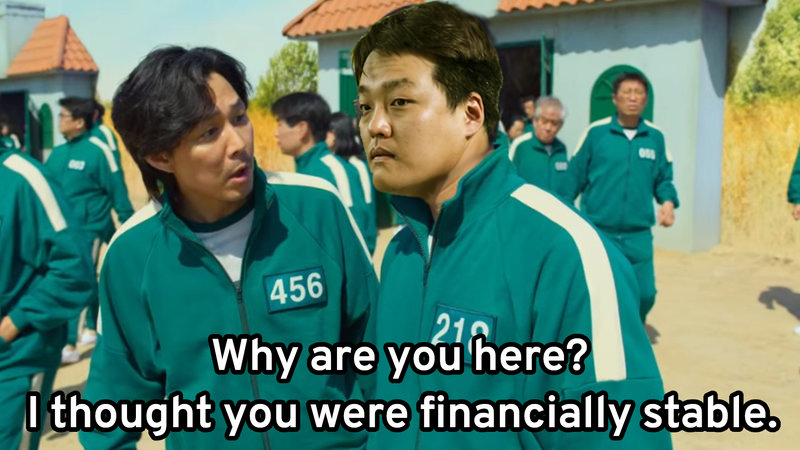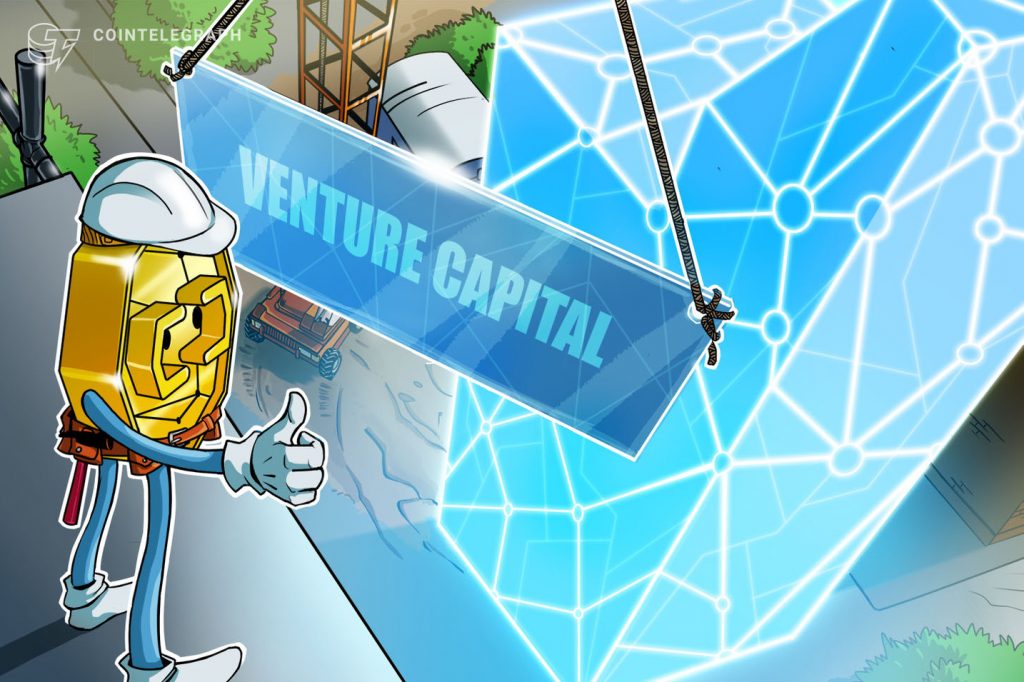Traditional venture capital funds drive valuations through multiple funding rounds. Startups aim for initial public offerings or other exits. Then the sharemarket decides upon a more realistic valuation.
But in cryptoland, tokens introduce market capitalization while a company is being built.
This means there are a lot of competing interests and agendas. Token sales for Web3 startups can be the bastard child of a personality cult leader founder and a bunch of VCs, raised by a group of Discord-dwelling degens manning a DAO, while speculators trade 24/7 and the media circles.
So, how do founding teams get the balance right between the needs and wants of the VCs and what’s best for the community? Are the interests of VC funds aligned with the interests of token holders?
Even VCs were LUNAtics
Let’s start with LUNA’s collapse. Who did the due diligence? VC funding can have a big impact on whether the community invests or thinks a project is legitimate or not. The stamp of big-name funds carries credibility and traction before retailers can invest.
Retail investors got rekt when Terra’s algorithmic stablecoin project and ecosystem collapsed in May. The stories of homes and life savings being lost and suicide hotlines being posted on Reddit were alarming. Memes of Squid Games and Bernie Maddoff’s 150-year prison sentence were mashed up next to Terra founder Do Kwon’s attempt to save the ecosystem with a phoenix-like token called Luna 2.0.
Perhaps representative of retail investors in general, one retail investor who lost a substantial amount when the algorithmic stablecoin collapsed told me, he “didn’t really get it but thought it was too big to collapse overnight.”
On the other hand, some funds that trade complex financial products for a living made a killing.
Who did the due diligence? Who said pegging two related coins via complex math was a good idea? Most were just plain confused.
One very senior risk analyst at a crypto VC fund told me he held grave reservations regarding the “algorithm stablecoin.” But his team was assuaged by the cap table having some big names in crypto capital.
And he actually read LUNA’s filings from the United States Securities and Exchange Commission.
VCs look at cap tables and see who else invested. LUNA was widely considered a “blue chip” by then, leading among crypto analysts and then reputable institutions, such as Three Arrows Capital, Pantera Capital, and Coinbase Ventures. Pantera notably got its LUNA exit timing right, while Three Arrows Capital is in liquidation and has filed for bankruptcy.
Three Arrows Capital bought 10.9M locked LUNA for $559.6m – it’s now worth $670.45.
Ouch
— Crypto Maxi (@cryptoMaxi420) June 14, 2022
Everyone wants to be the smartest guy in the room. “With the LUNA example, VC backers must be seeing something you don’t, was the thought,” according to that risk analyst.
“It always was a Ponzi, no point mincing words,” he tells Magazine.
He argues that “VCs can distort everything, even in who supports what L1 chains. It’s a PR war; VCs turbocharge the machine. I call it the VC hunger games.”
This is one high-profile example of the perils of VC funding for crypto communities.
What is a crypto VC anyway?
There is a difference between VCs and the retail investor community, and Web3 blurs the lines. Traditional VC fund managers often push for large capital deployment, a board seat, rapid growth and expedited exits. But Web3 VCs are often early investors who first engage as active community members, providing liquidity and governance to build out a project.
“Community” itself is a vexed concept, as participants can literally “sell out,” and institutions are part of the community too, having been involved from early on. Ethereum had 3,000-odd participants, a mix of individuals and institutions.

First, we need to understand who VCs are and where they come from, which will help us understand the dilemma of building an organic Web3 community.
The first crypto native funds emerged from investors who got lucky and made a killing on early crypto projects and were suddenly flush with cash. Many had worked on exchanges in the early days and, consequently, were on first-name terms with every token project that tried to get listed. So, they know pretty much everyone in the ecosystem and usually get the first bite at the early funding rounds of any decent project trying to raise capital.
Coinbase, Ethereum, Consensys and others produced some extremely wealthy individuals who went on to become investors in many projects. Some launched their own VC funds or firms, while others have stayed low-key to investing. But they all know each other, so they can get early access to deals.
Many exchanges also established incubators or accelerators, such as Binance Labs and Huobi, that incubate super early projects and take a percentage of tokens for funding. They can leverage their network for funding and promises of support, such as listing on their exchanges and social media help.
More recently, individuals have pooled capital to become institutional investors — e.g., coordinated capital investing through investment DAOs. Legally pooled funds management and taxation laws generally lead to these conversations around creating a DAO and/or legal investment vehicle structure.
So, Web3 VC firms now include a spectrum from 20-something degens who have established their own funds, electricians mining Bitcoin since 2013 to Softbank.
Mark Lurie, a VC turned Web3 founder, says:
“What do we even mean by community versus a VC firm? People love a villain and hate the man, but at the end of the day, they are all just people. VC in Web3 is a messy, amorphous concept in Web3. Is a group of 20-year-olds with a website an entity, a VC firm, or is that just a bunch of 20-year-olds? VCs also could just be a few whales.”
Yet, there is always a trade-off between an organic community and exit horizons when dealing with tradable liquid tokens.
wild chart pic.twitter.com/g0xbkWjgCy
— Turner Novak 🍌🧢 (@TurnerNovak) June 7, 2022
Crypto VC firm to a hedge fund is a continuum
As liquidity is a key aspect of crypto investing, exit time preferences constantly vary compared to traditional VC investments. Liquidity refers to the ease with which an asset or security can be converted into cash at market price.
One of the clearest ways in which VC interests collide with the community’s is in token lockups.
VCs often buy a huge chunk of tokens at an early stage at a very low price, and these tokens are often time-locked, so they can’t be sold for one or two years. When the time is up, VCs face the dilemma of dumping their tokens — which makes them a fortune but tanks the price of the community’s holdings — or hanging on. Typically, VCs are perceived to choose the former.
Lurie thinks the crypto community should create VC review systems for better community building. “The community is aware of the quick flip. On-chain vesting is the only thing holding VCs to that vesting schedule,” he says.
“I wish they could rank VC firms by whether they engaged in quick flips — so founders are aware if they are really dealing with a VC or more of a hedge fund.”
The capital cycle is different in Web3 compared to traditional VC. Bear and bull cycles also mean that cash preservation can distort investor markets. Exits may need to be expedited in a bear market.
VCs may face conflicts between their own cash position and helping an invested company. Web3 lock-ups of a year or so, for example, are famously shorter than in the traditional VC realm, of, say, seven years.

Staking (especially in a bull market) may attract VC funding away from riskier seed VC plays. Staking a retail investment once a token lists on a retail exchange can provide better cash returns than a “cheap” seed deal pre-token launch, locked up for 12 months, that tanks when it lists as a token.
Crypto VC firms invest at various stages and, at times, act like crypto hedge funds. Venture capital invests in startups to accelerate their growth and generate high returns for investors. Hedge funds traditionally invest in a variety of investments, ranging from stocks, bonds, commodities and currencies using complex structures and leveraging in order to boost returns more rapidly.
David Mack, managing director of Koji Capital, tells Magazine, it’s a continuum:
“Crypto VCs are effectively hybrids: When teams are raising seed capital to get resourced to deliver a product, our approach is the same as most venture investors. However, when we realize our investment and hold liquid crypto assets, we start to resemble a hedge fund, often using that liquidity to support the early product we invested in.”
“This kind of approach is an emergent feature of crypto-focused firms, and founders are really in search of this capability when selecting their investors,” says Mack.
If assets are tokenized and liquid, then VCs become hedge funds in the long run. A shift to tokenization, from passive to active assets, is more like hedge fund activities. This can create enduring conflict.

Liquidity vs. long-term community building
“There is a massive conflict between VC liquidity and long-term community building,” opines Jonathan Allen, who started his first VC fund out of college. He now runs Mirana Ventures, is a core contributor to BitDAO, zkDAO and eduDAO, and sits on the PleasrDAO board.
Liquidity allows VCs to think about short-term profits in conflict with communities building for the long term.
“Liquidity raises a bunch of new issues. Quality communities mean people who are there for the long haul. We have barely scratched the surface of a healthy community that incentivises better community members,” argues Allen.
Allen was also a U.S. Army Explosive Ordnance Disposal (EOD) Technician (bomb disarmer) who got into crypto after an injury suffered in Afghanistan in 2012. The EOD motto is perhaps suited to being a crypto VC, too: “Initial success or total failure.”
He argues that crypto VC has “evolved over cycles — with increasing community exposure and less VC funding now favored.” The alternative is fair distributions of tokens to the most active community members and project users to ensure the most valuable people to the project are motivated by the correct incentives.
“We don’t want a lot of VCs to own a lot of tokens. A lot of VC funds are maybe not as helpful as individuals or communities. We often advise our portfolio companies to save 30% for angels. Individuals who we feel need to, and can be, more helpful.”
Angels are typically the investors who first write a small cheque in return for equity when the company is at a very early stage and the company’s valuation is still low.
While the exit cycles in crypto are a key difference from traditional VC, founders can also determine the lock-ups so good-faith investors cannot dump their profits.
Nonetheless, for Allen, community building is key. “With a lot of invested projects, we let the code stand for itself,” he says. “It’s about building authentic community missionaries versus mercenaries — first movers at scale. VC funding in the form of blitzscaling can grow the wrong kind of community.”
“Too often, people are free riders — they hold tokens and don’t do anything.”
VCs add investor network effects and tokenomics advice
While there’s certainly an increasing hostility to VCs in the industry, some founders reject this angst.
Josh Tobkin dropped out of a large economics scholarship to play professional poker and “learned to think in probabilities.” By the last crypto winter of 2018, he had founded Unity Chain, a crypto lab in Taiwan. He has some well-known investors, including FTX, United Overseas Bank, Coinbase and Razer.
He is now working on a novel blockchain consensus algorithm: the creation of an intralayer that bridges all layer 1s, layer 2s and decentralized apps across all ecosystems. “A more secure infrastructure to prevent instances like the Ronin Bridge hack or the liveness faults of Solana.” His current project, SupraOracles, plans to have a token, with the infrastructure launching soon.
He believes a VC lead investor adds great value, as the “complication is taking a check from everyone. VCs make it much easier to close deals both with other investors as well as social proofing for large corporate partners.”
Tobkin tells Magazine, “Decentralized retail raises are great, but it helps to find (VC) funds who are passionate about your project when it aids their entire portfolio. Projects need a mixture of both types of funding for their growth whilst balancing decentralization.”
“Never go full VC, and never go full retail.”
Tobkin says VCs played an important role in SupraOracles: “VCs were necessary to get started. The cap table [table of investors] amounts are very balanced. We didn’t oversell. 1% max for each investor on strict vesting terms.” Vesting refers to when equity can be cashed out.
Tobkin also values the Web2 introductions that more traditional VCs can offer.
“Crucially, the leads for our rounds have worked for it. They have a massive list of traditional Web2 in need of our exact solution, and they are making introductions. They sell for us — it’s a win-win. Retail generally can’t do that unfortunately.”
“With one integration, we’re bridging Web2 to Web3 and vice versa. We have VCs to thank for it.”
Are you a traditional VC who wants to enter into Crypto VC? or a founder who wants to study thought patterns of VCs?
Here are 14 great threads on Crypto VC that will explain you the whole crypto VC landscape and what daily life looks like as a crypto VC 🧵 ↓
+ some alpha..
— Meet Barvadiya (@meetbarvadiya) June 19, 2022
Wen token sale?
Tara Fung is another Web3 founder grateful for VCs. She is a Harvard graduate who “transitioned to tech with finance skills and a general curiosity.” A former chief revenue officer at two “centralized” fintechs, she “wanted to build on the new frontier.” Her startup, Co:Create, seeks to help successful NFT projects scale.
Becoming a founder in 2022, she received $25 million in VC funding led by a16z. Her “thinking was that the resources would help us deliver faster, and I could focus on building (as I was) feeling like this would be a rocky year.”
A16z closed a $4.5-billion crypto fund in May 2022 despite treacherous market conditions. She met a16z partner Chris Dixon four times before meeting the other partners. She notes there’s “not a ton of diligence at seed. It’s a diverse cap table, and obviously, the fundraising timeline sped up due to a16z’s participation.” She also hand-selected Web3 native angels to be included on the cap table.
She highly values that “a16z has an in-house research team that I can go to with a problem, such as best practice for tokenomic design.” That’s a huge value add. Tokenomic design is an emerging, complex and sometimes arbitrary science.
This is an important theme. How the companies are structured early on has important ramifications. “What we do now can set us up for success — VCs offer a level of professionalism.”
“Token sales too early can be a double-edged sword.” Fung explains that one challenging aspect of building in Web3 is that founders must “build publicly, not behind closed doors.”
When and if to form a DAO is now another vexed question alongside “wen” to have a token sale?
“DAOs offer great promise, but what does the timeline look like? You have to be thoughtful and create clarity at the start and let the community evolve.”

Investor protections
Lurie, founder of Shipyard Software, agrees that VCs can work hand in hand with decentralized governance and bring major benefits to the community. He argues that in crypto, it’s “necessary to decentralize governance because the community demands it. It is also a necessity to make the VC model work.” VC funding is a competitive and a regulatory necessity to building a viable company, argues Lurie.
“To me, a defining characteristic of a VC firm is that it steps up to ensure investor protections and good governance,” says Lurie.
Lurie started out at VC Bessemer Venture Partners, and he has seen both sides of the VC spectrum, raising several VC rounds, “some hard, some easy,” for his startups. This includes an early NFT protocol ICO in 2017.
“Decentralized governance is a trade-off with nimbleness. It’s tough to start a fully decentralized company from day one. You need to strike a balance. Startups are in a constant battle, and few people make it to the end of that journey.”
“One of the best reasons for VC-backing is governance — a partner on a deal will hold founders accountable,” he says.
Are faceless DAOs not accountable to investors?
We’ve noted how a VC’s interests can work against those of the community, but sometimes, the community can work against the interests of VCs. And communities can vote in a way that totally disregards the law or their obligations. In mid-June, Merit Circle DAO, a gaming DAO, voted to return the investment of a major play-to-earn guild turned early-stage investor Yield Guild Games (YGG) instead of paying out the 30x return it was owed.
It’s sort of funny how deeply this whole web3 thing set the hook with VCs.
They’re squirming a little bit now — lashing out at skeptics in a way usually reserved for CEOs of fraudulent companies.
How did we get here?
1/https://t.co/Tj3OtUUl3J— Travis.web1 (@coloradotravis) June 7, 2022
What will this mean for VC investing in DAOs in the future if the community can simply overturn a contractual agreement with a vote? Who’d stump up the funds in the first place?
As it happened, a reasonable deal was hammered out whereby YGG got a 10x return instantly, with no more vesting or risk of a lowered valuation. But it highlights that there are perils, too, for VC investors with the evolving and sometimes flaky nature of crypto communities.
If a DAO successfully renegs on a SAFT, it will embolden other DAOs to do the same resulting in greater levels of politics and a chilling effect on future investments into DAOs.
— Galois Capital (@Galois_Capital) May 26, 2022



